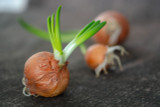Learn How To Harvest, Prune, & Dry Lavender Flowers
Lavender is known for its lovely fragrance and soft purple colors. Learning how to harvest, prune, and dry lavender flowers from your own garden will allow you to use them in many new ways. This guide will discuss the basic methods on how to care for your lavender, so you’ll have a thriving, growing plant.
When to Harvest
The more you prune your lavender plant, the more it will grow and bloom with lots of flowers. Harvest the plant at least twice a year – in early spring and again in fall. But if you live in a climate where it blooms all year round, keep harvesting as long as it’s blooming.
For a sachet or in potpourri, take cuttings when the buds are still tightly closed for the strongest fragrance. But wait until the flowers are more open if you’re adding the cuttings to a vase to enjoy the beautiful colors.
It’s also best to harvest lavender in the early hours of the day before the sun beats down. This keeps the fragrance strong and the flowers fresh.
How to Harvest
When harvesting, always use pruning shears and cut the stem right above the two newest leaves, or at the junction of two blooms or branches. For a longer stem, follow it down to a lower junction.
Pruning Lavender
Similar to harvesting, yet slightly different, pruning should be done no more than twice a year. But wait until after it flowers to prune, otherwise you may prevent it from blooming at all. Get rid of all the spent flowers to help them thrive and grow.
Once the last flowers have faded in the fall, give it a good heavy pruning to protect it in the winter. There is a tough, woody area of the stem just as it enters the dirt – be aware not to cut this part. Prune the plant at least an inch or two above.
How to Dry Lavender
Before you harvest lavender, decide whether it will be dried. If so, it can be hung or put in a dehydrator.
Frankly, the simplest and prettiest way to dry lavender is by hanging it. Using twine or a rubber band, bundle the stems into small, even, loose bunches to offer enough airflow. Out of direct sunlight, hang bunches of flowers upside-down in a well-ventilated room or porch. It may take two to three weeks to complete the process.
You can use a dehydrator if you need the flowers to dry more quickly. If you’re using lavender in salves or oils, for example, a dehydrator is recommended because any moisture left in the buds will lead to mold. Remove stems and leaves first.
If you use your lavender in baking or cooking, use it when it’s fresh and just cut it for the best flavors.
Ready to Work with Some Lavender Flowers?
Do you already have lavender in your garden, or would you like to add some? We have all the seeds and products to get you going. Freedom Farms has everything you’ll need - from planters and pruning shears to seeds and garden gloves. Contact us today and happy gardening!
Recent Posts
-
The Secrets To Growing Radishes In Containers
Container gardening is a popular way to grow vegetables like radishes. Growing radishes in container …26th Jun 2023 -
How To Successfully Grow Onions From Seeds
Many recipes use onions to give a strong taste and smell. Growing onions from seeds is better than b …26th Jun 2023 -
How To Grow Radishes At Home: A Step-By-Step Guide
Growing your radishes at home can be a rewarding and delicious endeavor. These crispy and spicy vegg …26th Jun 2023




